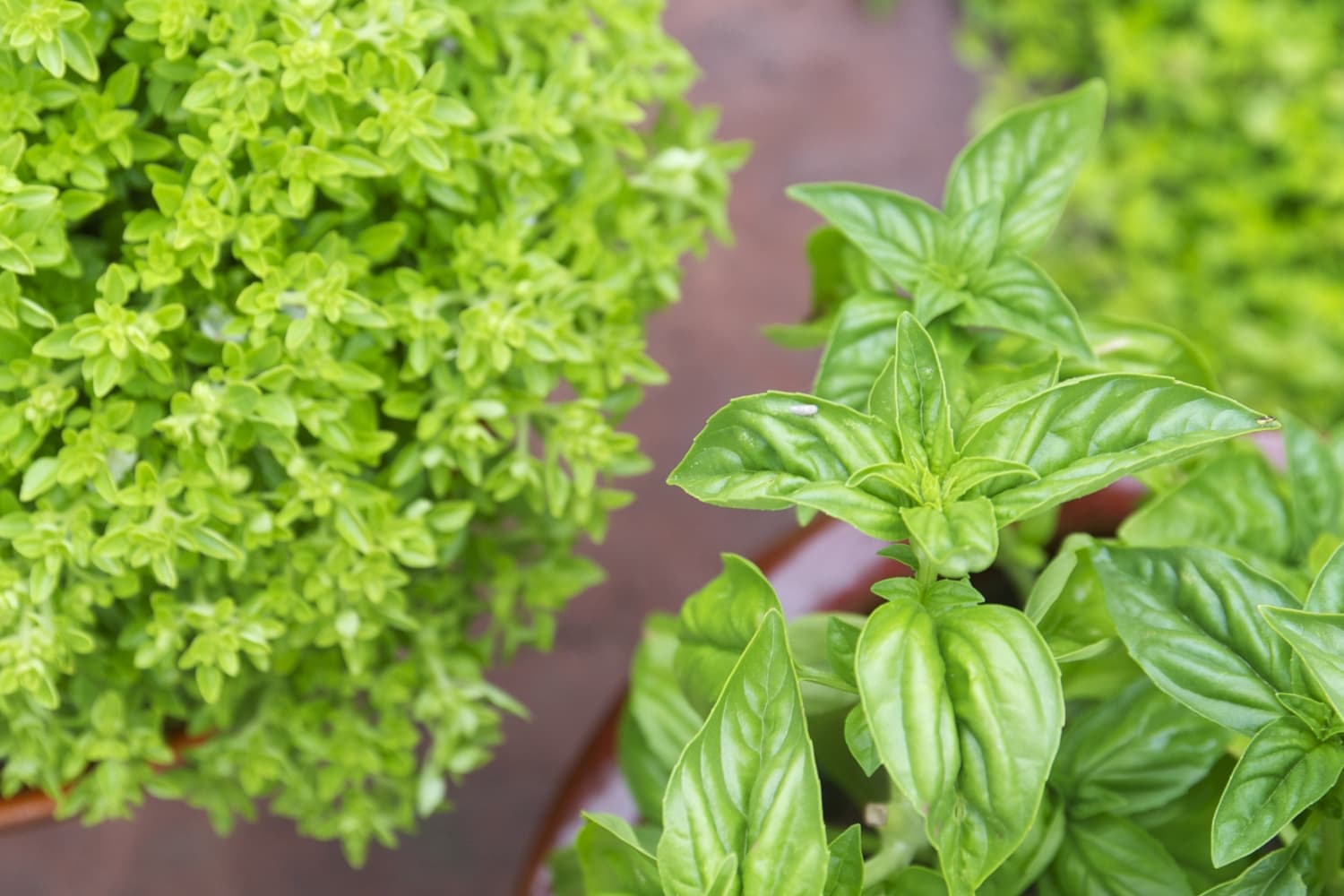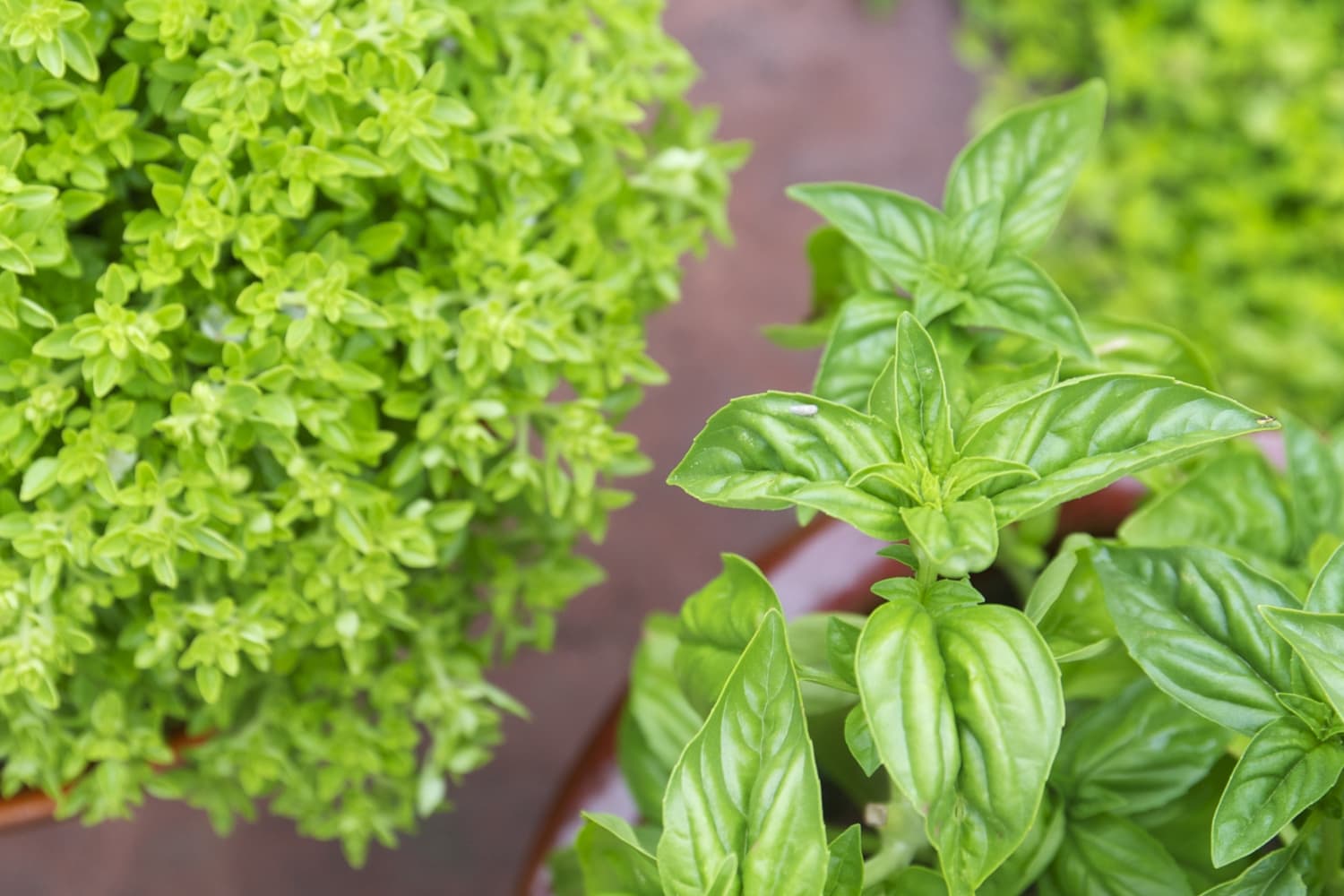Products You May Like

Basil is the most perfect herb — especially when summer rolls around. I generously sprinkle it over caprese salads, top pasta with it, muddle it into Bloody Marys, and make sweet basil syrup for my sliced summer strawberries. And don’t even get me started about how liberally I toss freshly chopped basil on my pizza; I know I’m not alone here.
But those packages or bundles of basil at the grocery store can really add up. Fun fact: It’s way less expensive to buy an established basil plant and focus your energy on growing your own leaves. Plus, it doesn’t get much fresher than basil you freshly picked two seconds ago!
Here’s everything you need to know about growing your own basil.
There’s nothing like clipping fresh basil leaves from your garden (or windowsill!) and adding it right into whatever you’re cooking. The question should really be: “Why shouldn’t I grow basil?” Basil’s fresh, spicy, clove-scented flavor profile is a natural addition to so many cooking styles and cuisines.
Just one well-pruned plant will supply you with about a 1/2 cup’s worth of basil each week. Even if you’re limited on space, simply find a sunny windowsill, fill a container with well-drained soil, and you’re in business. Basil for months.
Certainly the most common cultivar of basil is sweet basil or Genovese basil, but other culinary options — such as Thai, lemon, globe, and cinnamon — are also readily available. One of the main differences between basil and other herbs is the fact that it is a tender annual. It is very sensitive to the cold, so get ready to plant it soon! May is the best time to start growing basil!
Basil is a pick-as-you-go kind of herb. You may harvest only what you need, or if you have an abundance on hand, you may clip a mass harvest. Harvest basil as you would mint, snipping a stem just above the point where two large leaves meet. Regular clipping encourages a more rounded, less leggy plant.
It’s always better to harvest basil before the plant flowers. If you don’t have time to harvest any leaves, just pinch off the flowering portion. The flowers are actually edible, but if you pinch them off, the plant can now direct its energy on growing tasty leaves. Also be sure to only harvest up to 2/3 of the entire plant, so it can continue producing.
